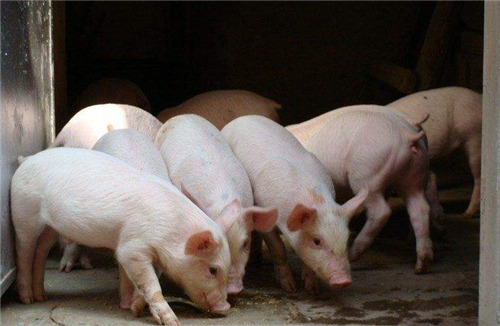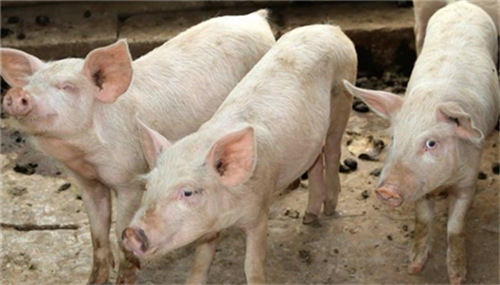There is a large temperature difference in autumn, how to prevent and control influenza virus in piglets?
Since the beginning of autumn, the weather has gradually turned cooler. Compared with the natural disinfection and sterilization of direct sunlight in summer, the pathogenic microorganisms in autumn are more rampant, especially influenza viruses. Influenza viruses are sensitive to temperature and ultraviolet rays, and cooler weather and shorter sunshine lead to an increased risk of influenza infection. in addition, overcast rain, humidity, muggy heat, overcrowding, malnutrition and sudden changes in feeding conditions are particularly likely to cause influenza outbreaks in pigs.
So what on earth is flu?
Influenza is a rapid and highly contagious respiratory infectious disease of pigs caused by influenza virus. Influenza viruses belong to the family Orthomyxoviridae. They are enveloped, spherical, and individual filaments can be as long as several microns. It belongs to RNA virus, which can cause upper respiratory tract infection and can infect pigs at any stage by rapid air transmission.

After infected with the disease, the disease occurred simultaneously in the whole herd within 2-3 days, and the body temperature increased to 40-41 ℃, and in severe cases it was as high as 42 ℃. The clinical symptoms are mental depression, loss of appetite or even abstinence; often lying on the ground, unwilling to walk, forcing them to walk with claudication; dyspnea, abdominal breathing, paroxysmal cough, mucous purulent secretions from mouth, eyes and nose, blood is often found in secretions, eye conjunctiva flushing and so on. Pregnant sows miscarried and gave birth to weak piglets, the abortion rate was about 10%, and the mortality rate of newborn piglets was higher.
At the same time, it is often accompanied by mixed infection of blue ear disease virus, classical swine fever virus and respiratory coronavirus, and often secondary to Haemophilus parasuis, Actinobacillus pleuropneumoniae, Bordetella bronchosepticum, Pasteurella multocida, Mycoplasma pneumoniae and Streptococcus, which complicate the disease and trigger bronchitis, pneumonia, pleurisy, pericarditis and other diseases, thus increasing morbidity and mortality, resulting in greater losses.
Piglets have poor resistance, face a complex and changeable environment, and have a high risk of being infected by influenza virus, so how to prevent and control influenza virus for piglets?
First of all, to provide a safe and comfortable living environment for piglets.
Ensure the temperature, humidity and suitable feeding density in the pigsty. Due to their own physiological characteristics, such as thin skin and thin hair, low subcutaneous fat content, and insufficient reserves of body fat and glycogen to provide heat energy, the heat preservation ability of piglets is so poor that the ambient temperature required for piglets after birth is relatively high, as shown in the table below.
At the same time, reasonable feeding density and appropriate humidity contribute to the circulation of air and reduce stress. If the feeding density is too high, the air will not circulate smoothly and affect the intake, drinking water and rest of pigs. Influenza virus is mainly transmitted through the air through the respiratory tract, so the air quality of pig houses is very important for the prevention of influenza. On the one hand, ventilation should prevent excessive concentration of ammonia, carbon dioxide and hydrogen sulfide in the pigsty, on the other hand, prevent the air from being too dry and reduce the irritation of particulate substances in the air to the mucous membrane of the pig respiratory tract, thus inducing the disease.
Secondly, establish and improve the biosafety measures of pig farms.
Regularly treat the feces and sewage produced by the pig farm, do a good job in the hygiene of the pig house, and disinfect the pig farm every week. Influenza virus is sensitive to glutaraldehyde and can be diluted with 1RU 300 and thoroughly sterilized by spraying fine spray every 3 days. In the event of an epidemic, daily disinfection can be carried out. People and articles entering the pig farm are disinfected to prevent the virus from being brought into the pig farm.
It is very important to improve the immunity of piglets. From birth to weaning to the end of the conservation period, piglets experience tooth cutting, tail amputation, castration, weaning and other stress. Repeated and continuous stress will lead to piglet disease. Therefore, the immunity of piglets in the whole process is very important for the prevention and control of influenza. Therefore, piglets should eat colostrum as soon as possible after birth, which can enhance their physique, disease resistance and the ability to adapt to the environment.
Thirdly, piglets should be vaccinated.
Scientifically immunize vaccines such as classical swine fever, pseudorabies dogs and foot-and-mouth disease, establish a good immune system, and prevent influenza viruses from causing low immunity caused by other diseases. In addition to eating good colostrum, add anti-stress products, such as Oinmei, when piglets are weaned to minimize the possibility of influenza caused by weaning stress.
As we all know, the high fever caused by influenza can reduce the resistance of piglets, make piglets manic, depressed, respiratory system impaired, digestive function and circulatory metabolic system blocked, and there is no specific cure for influenza, so improving the resistance of piglets, combined with antibiotics to avoid secondary infection is the treatment of influenza.
In view of the frequent influenza in autumn, we added Yishuda (50% carbaciline calcium) 1kg/T to the drinking water and feed for 7 days to restore the body temperature, and at the same time added Abishu 0.5kg kg/T + Jianliyuan 0.5kg kg/T + vitamin C0.4 to prevent secondary infection while replenishing the nutrition needed for piglet rehabilitation. Severe individuals need intramuscular injection: Ennoqing 0.05ml / kg + Liyuan 0.1ml/kg intramuscular injection, once a day for 3-5 days, 0.1ml/kg is injected on the other side (the maximum dose is not more than 10ml), once, and once again on the third day.
Autumn has arrived, the prevention and control of piglet flu is very important to improve the production of pig farms, for these measures, have we achieved?
Related
- On the eggshell is a badge full of pride. British Poultry Egg Market and Consumer observation
- British study: 72% of Britons are willing to buy native eggs raised by insects
- Guidelines for friendly egg production revised the increase of space in chicken sheds can not be forced to change feathers and lay eggs.
- Risk of delay in customs clearance Australia suspends lobster exports to China
- Pig semen-the Vector of virus Transmission (4)
- Pig semen-the Vector of virus Transmission (3)
- Five common causes of difficult control of classical swine fever in clinic and their countermeasures
- Foot-and-mouth disease is the most effective way to prevent it!
- PED is the number one killer of piglets and has to be guarded against in autumn and winter.
- What is "yellow fat pig"? Have you ever heard the pig collector talk about "yellow fat pig"?



